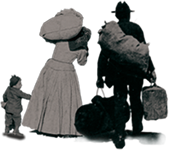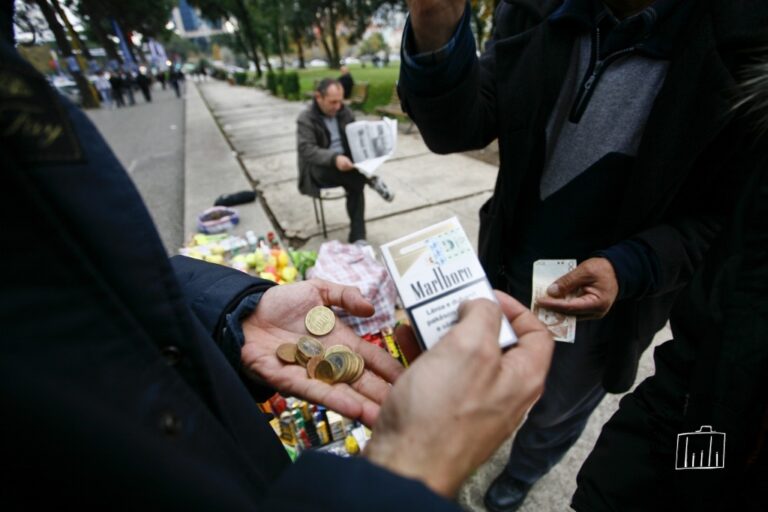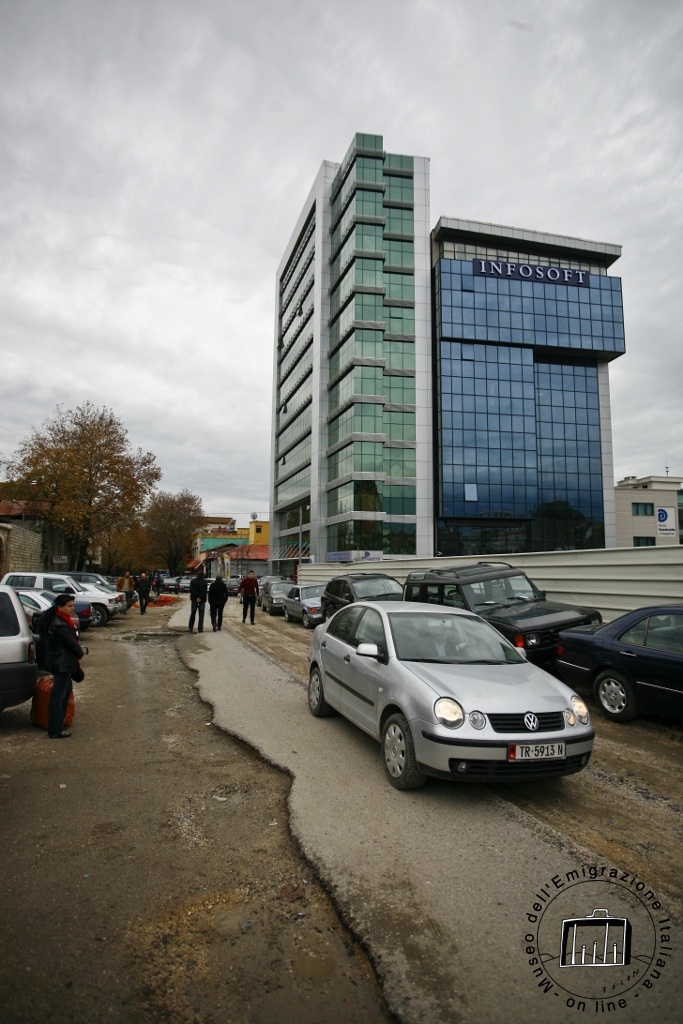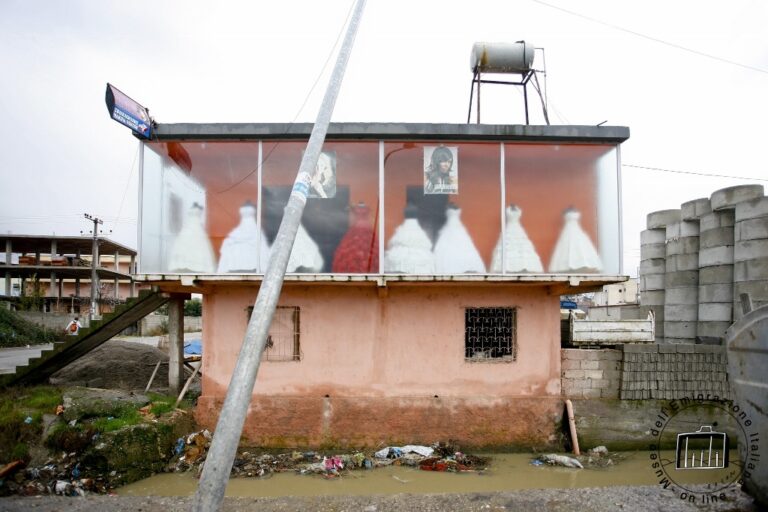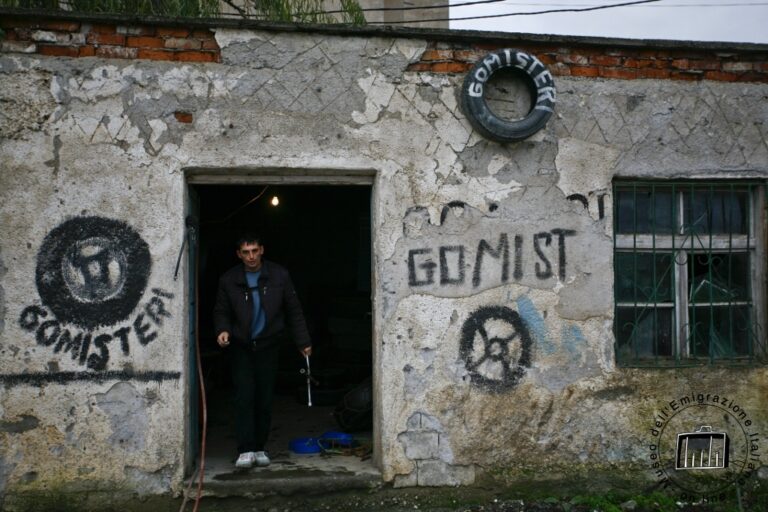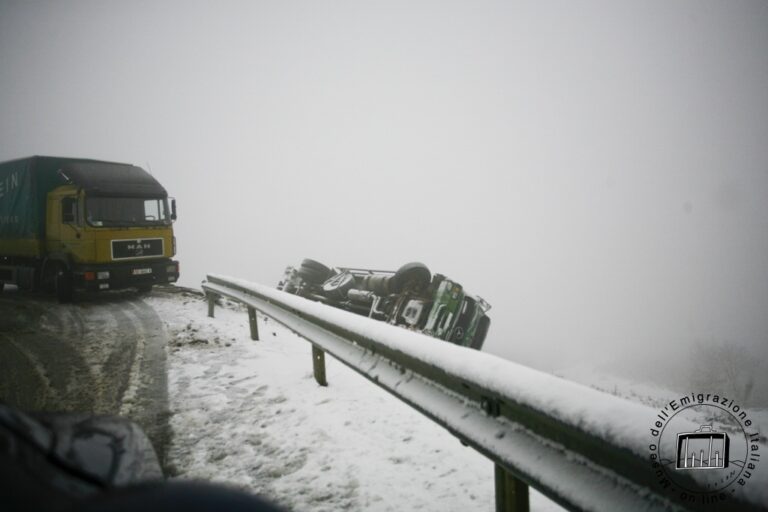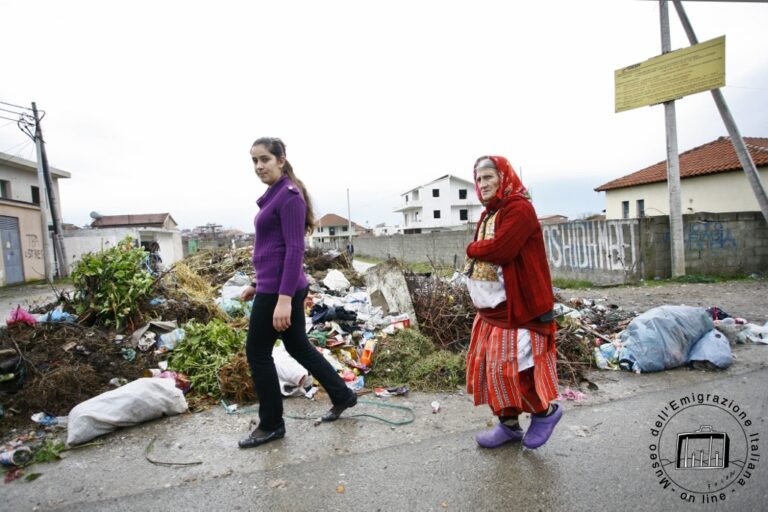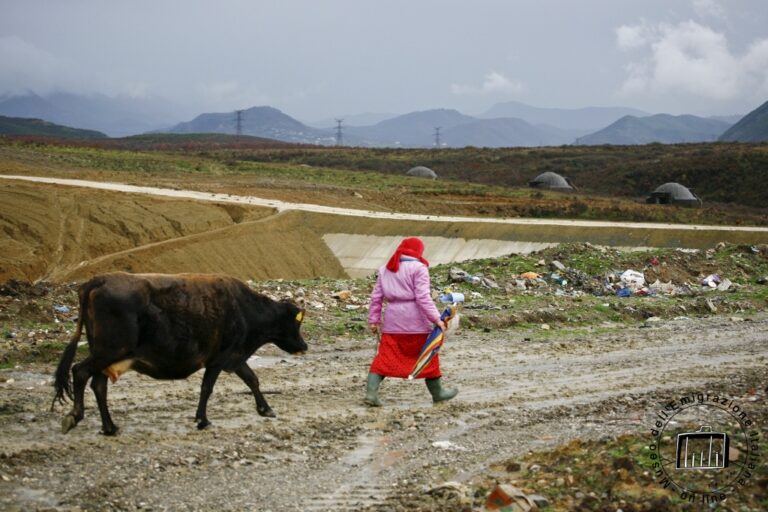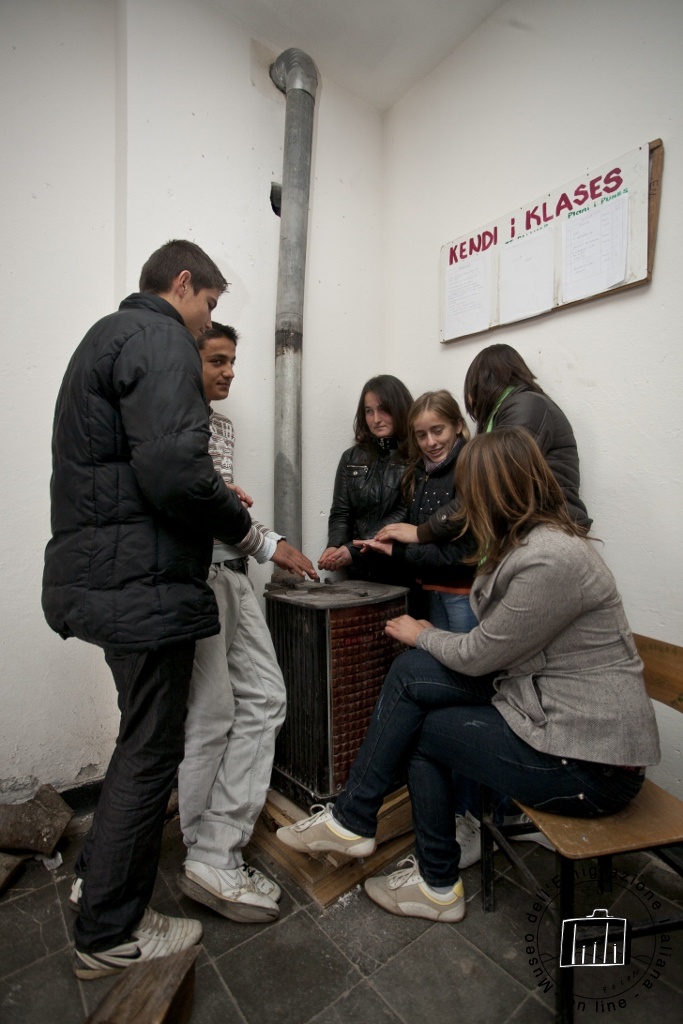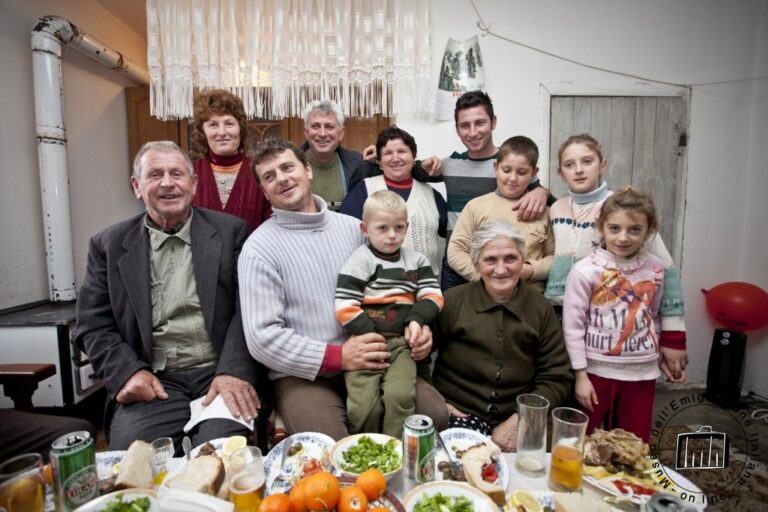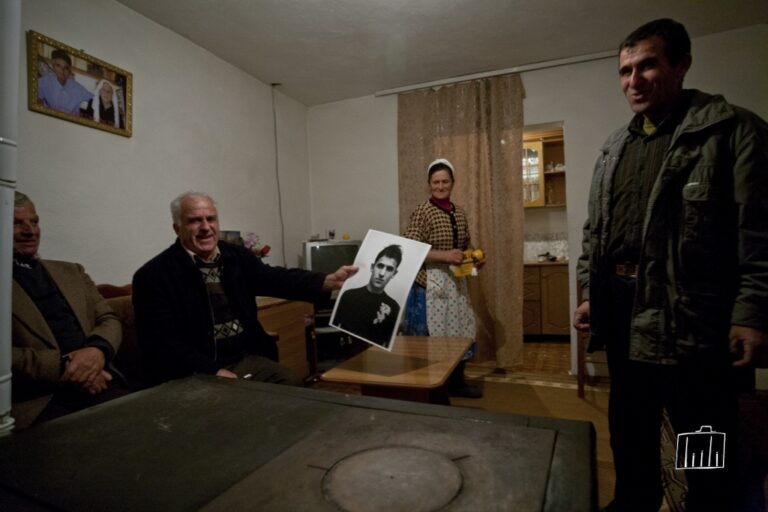What is perceived by many today as a invasion by foreigners (chaotic and uncontrolled immigration) has started a perverse process: the increasingly "visible" and sometimes "traumatic" presence of outsiders - as Norbert Elias called them, contrasting them with the established - produces in the latter a cultural regression that tends to transform our society, historically open and which necessarily remains so in the context of the world-economy, into a culturally and ideologically lock. This causes deep and widespread unease in both categories, which feel mutually "threatened" and therefore tend to escape dialogue, entrenching themselves in a self-referentiality that inhibits any possibility of communication.[1]
It was on this reflection that the project was born in 2009. The torn structure. Albanian boys between emigration and return Within the Carlo del Prete Educational Community.[2] of Lucca, whose activities with minors are managed by Cooperativa L'Impronta Onlus. The guests are foreign minors, mostly Albanian, unaccompanied, and often sans papiers. Having arrived in Italy illegally, they are brought to the Community by the Police Headquarters. Educators work to regularize them, take care of their formal and informal education and, later, a job placement. All this is based on dialogue. Dialogue between boys and operators, dialogue between them and their families of origin. Together with Dr. Paolo Gaddini, a psychologist, Federico Fambrini, head of the facility, and under the supervision of Prof. Paolo Chiozzi, professor of Cultural Anthropology at the University of Florence, the idea of using the visual component to help knowing-knowing the nine Albanian guests. And the photographic image, fitting into this context, became a new way to communicate. Albania was a land of great contrasts. Tirana a capital still poised between past and future. On one side modern cars parked under glass skyscrapers, on the other 1950s mopeds. The younger girls dressed in European fashion, the older ones still bound by tradition. Moving away from the capital city, the poverty ever greater. Poor formal education and, frequently, decadent schools. Agriculture and animal husbandry the foundations of subsistence. Jobs invented using makeshift means. Some men had set up inside former disused factories automobile repair shops.
Our project included a first series of shots aimed at portraying the engaged teenagers during their Italian daily lives and, a second, to family members who remained in Albania. The teens, participating actively in the making and choice of images, they have more or less consciously made a deep study of themselves. With the ability to choose how to appear, a kind of anthropological self enactment of reality, they became very concerned about what their parents' judgment might have been. That generational meeting-clash of tradition and modernity put them in front of a mirror: " Who am I?" Often a picture was enough to explain much more effectively what would hardly have been possible in words. Photography has become a medium of visual communication in the third part, when the images of the ones were handed over to the others. It was precisely this last aspect that proved to be the most crucial. The image took on the role of stimulus (photo-elicitation) to elicit memories, feelings, impressions and emotions from the interviewee. "Photo-elicitation is a particular type of in-depth interview, in which the image (...) becomes the focus of communication" and replaces the question[3]. For Chiozzi, the use of photography has not only an investigative function, but also allows for "ice-breaking," facilitating dialogue and fostering the relationship between interviewer and interviewee[4]. During both returns, the one with the "Italian" pictures to relatives in Albania and the "Albanian" pictures to the boys, it was possible to see how many unknowingly similar dynamics had developed. Those defeated by too much suffering stopped looking. Those who kissed the photograph and those who cried. One emblematic case. A father, with one quick glance, realized how far his son was on the wrong path. The following year the son was deported from Italy. This immediately raised a question: was the boy in choosing that very photo asking for help? Was it a message, more or less consciously, to his father?
This research owes a substantial methodological debt to Margaret Mead and Gregory Bateson, who in their Balinese Character of 1942 shift the focus of photography from testimony of reality to revelatory Of human behaviors. As Karl Heider observed.[5] were able to achieve "a combination of text and photographic images that has rarely been attempted and never equaled since." But: "The greatness and importance of Margaret Mead's research is also due to the relevance that the anthropologist gave to the restitution of methodological observations, a practice almost never followed by researchers."[6]. And the return of the photographs, as already explained, has been the focus of our project. That intimacy created between observer and observed, which cancels any distance of the gaze, directs us to that shared anthropology that visual anthropologist Jean Rouch advocated.
According to Chiozzi, the use of photography in visual anthropology has two different but at the same time complementary souls: "if in fact it is, on the one hand, research with images, on the other hand it is also research on/through images, and in this case it is presented precisely as anthropology of visual communication, in the sense that it explores visual modes of communication as a particular aspect of culture."[7]. E The Torn Structure, whose name revisits the structure that connects of Batesonian memory, undoubtedly falls within the scope of the second approach. During our observation-participant a real path developed on/through photographs. At this point it becomes necessary to clarify two fundamental aspects. On the one hand, as Susan Sontag says: " The photographic image (...) is never just the transparent account of an event. It is always an image that someone has chosen; to photograph is to frame, and to frame is to exclude."[8]. To photograph is to interpret. On the other hand, the very presence of a photographer-researcher in the field, thus provided with his own equipment, according to Heider himself "disturbs social actors who tend to behave unnaturally or otherwise change their behavior in part or entirely." Changes that he called distortions, i.e., modifications that are impossible to assess "since he cannot observe in the absence of himself."[9]. To observe is to transform. The scholar already by the mere fact of entering a reality changes it[10].
Another extremely interesting aspect, beyond the influence of the researcher himself, is in everyday objects where it is possible to trace the sense of others, the meaning that people attach to their 'world'[11]. Like the 'closet or room, for example, which have become a place of self-expression. While sharing the room with other comrades, one immediately notices the propensity to emotionally personalize one's space and the desire to communicate one's belonging. Many hang an Albanian flag, others draw it directly on the plaster or attach Albanian newspaper clippings, seeking psychological security at a time of highly traumatic transition. The attempt not to lose their roots, in the inevitable tear with the country of origin and in the equally inevitable re-connections socio-cultural with the host country, it reinforces what Tajfel called the ingroup ( one's membership group) as opposed to non-membership ( outgroup). One's drawings are a crude visual self-presentation where they enunciate the core values of their social identity.
The project was developed with the goal of breaking down the walls of distance, cultural differences between the country of origin and the adoptive country, to help the immigrant child rebuild a new identity in accordance with the new environment, creating and re-creating, through the use of photography, connections between the children and their families-which become each again truly a structure that connects ...
E' ethically it should be clarified that since we are dealing with minors, the use of the information and images of the children, published in this research, has been authorized by their legal guardians in Italy.
(Excerpt from Morelli S. (2011), The torn structure. Albanian boys between emigration and return, Bonanno editore, Acireale-Rome).
BIBLIOGRAPHICAL REFERENCES
- Augé M. (1994), The meaning of others: relevance of anthropology. Milan: Edizioni Anabasi,.
- AA.VV (2008) Under all the skies, Paolo Cresci Foundation for the History of Italian Emigration, Lucca: Tipografia Tommasi.
- AA.VV (2009) 2010 dossier on poverty in Tuscany, Caritas Tuscany
- AA.VV (2010) Caritas/Migrantes. Immigration. Statistical Dossier 2010. Pomezia: Idos Edizioni.
- AA.VV (2010) Black on White. The image of immigration in the local press. Ospedaletto: Caritas Lucca
- Amerio P. (2001) Community psychology. Bologna: Il Mulino.
- Balma Tivola C. (2004) Visions of the World. Trieste: Edizioni Goliardiche.
- Biagini A. (2005) History of contemporary Albania. Milan: Bompiani.
- Centini M. (2004) Physiognomy. In the signs of the face the destiny of man. Milan: Red Editions.
- Canevacci M. (1990) Anthropology of Visual Communication. Rome: Knowledge 2000
- Chalfen R. M. (1997) Smile, please! The visual construction of daily life. Milan: Franco Angeli.
- Chiozzi P. (1989) History, anthropology, photography. Some methodological considerations on the usefulness of archives and photographic collections. 'Tuscan Photographic Archives,' no. 10.
- Chiozzi P. (1993), Handbook of visual anthropology. Milan: Unicopli.
- Chiozzi P. (2008) Anthropology of Freedom. Rome: Bonanno Editore.
- Chiozzi P. (2009) Didactics of Visuality. Rome: Bonanno Editore.
- Chiozzi P. (2016), Knowing how to see: the "long ride" of visual anthropology at Society Political Change, vol. 7, no. 14. Florence: Florence University Press.
- Cicero, De Oratione, III, 59; Orator, XVIII.
- Del Pistoia D. (2007) Globalization neo-racism and culture clashes. When culture divides. Rome: Armando Editore.
- Dingo F. (2007) Albanian identities. A psycho-anthropological approach. Rome: Bonanno Editore.
- Heider K. (1976), Ethnographic Film, University of Texas Press, Austin & London.
- Morelli S. (2016) Images and words. Dialogue on ethics and method of photographic research In P. Chiozzi ( ed.), For an atlas of the humanities. Social Science Review No. 16.
- Rouch J. (1979), La caméra et les hommes, in De France C. (ed.), Pour une anthropologie visuelle, Paris: Mouto.
- Ronzon F. (2008) On the field. Rome: Meltemi Publisher.
- Sontag S. (2003). In the face of others' pain. Milan: Oscar Mondadori.
- Sontag S. (2004). On photography. Turin: Piccola Biblioteca Einaudi.
- Tajfel H. (1999) Human Groups and Social Categories. Bologna: Il Mulino, Bologna.
SITOGRAPHY
- www.braingain.gov.al
- www.improntacoop.it

